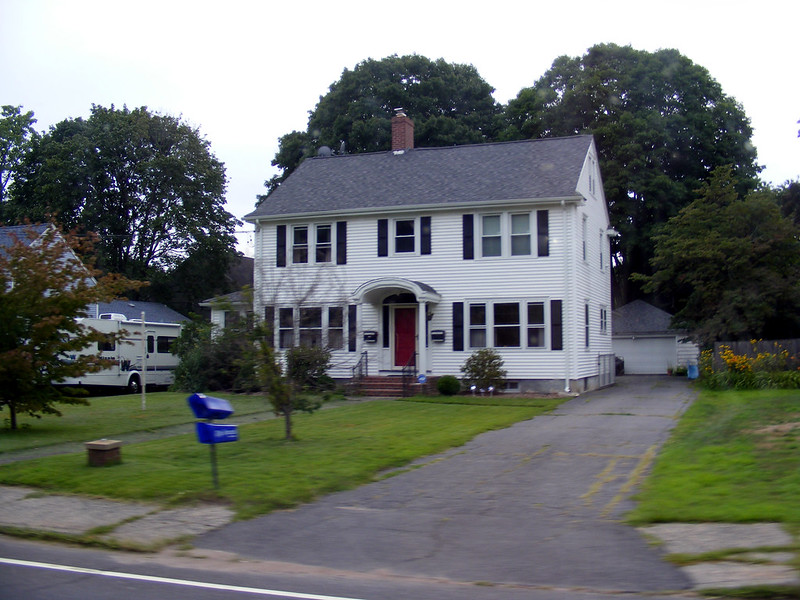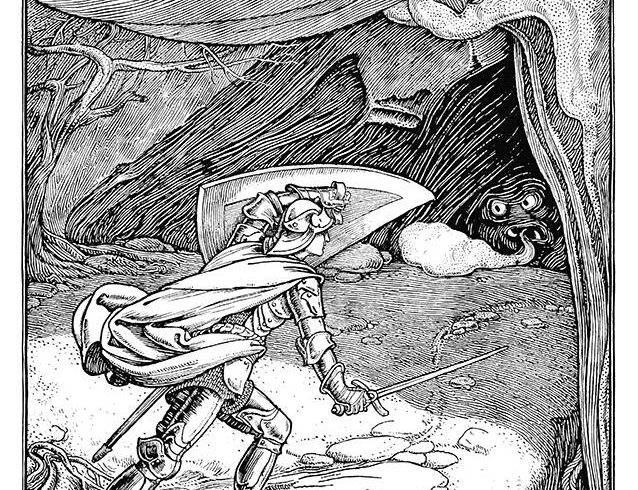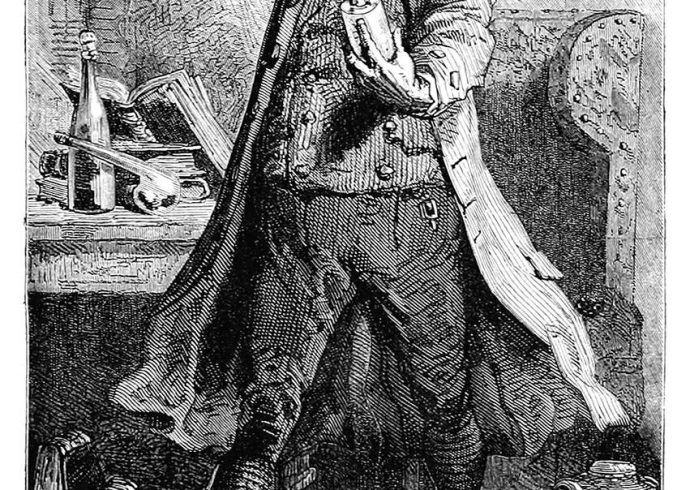
The Haunting in Connecticut: The Film and the Real Story
Imagine renting an apartment in a two-family house that seems to appear normal on the outside, painted white, with perfectly trimmed shrubbery surrounding it. The rental apartment has just been cleaned, with a fresh coat of paint, ready for its new resident to move in. Then imagine walking into the cellar of the house and finding Medieval-looking devices. What are they? What is their purpose? Why are they even there? If you were to ask the property owner, he would tell you exactly what they were for: the preparation of decedents for burial. As creepy as that sounds, the lease has been signed, the first month’s rent paid, and the moving van slated to arrive in a few days.
This is what happened to Al and Carmen Snedeker when they moved from Monticello, New York in 1986 in order to be closer to UCONN Health Center where their son Philip was receiving cobalt treatments for Hodgkin’s lymphoma when he was diagnosed with the disease at the age of 13. This was the closest facility capable of treating childhood cancers, which prompted the Snedekers to move closer to the hospital. Back in upstate New York, they were making the 300-mile round-trip five times a week for Philip’s treatment. The radiation treatment burned his skin from the inside. Carmen was afraid that the trips would kill her son as fast as the cancer. The family decided they had to move to Connecticut.
In the movie, “A Haunting in Connecticut” (2009) as with the documentary that was shown on the Discovery Channel, Carmen’s two older sons Philip and Brad, took two separate rooms in the basement for their bedrooms. It was in these two rooms where the embalming process took place. The third son, A. J., and his sister Jennifer, had their bedrooms upstairs where the parents had their bedroom. It was during the cobalt treatments when Philip started to experience strange occurrences in the cellar: seeing the shadow of a man behind the double doors with windows, lights going on and off, shadows of other men downstairs late at night, and personal items being moved and misplaced. As much as Philip tries to tell his mother what is going on, she brushes it off due to his overactive imagination, wondering if his cancer treatments might be playing a role. Carmen asks Philip’s doctor about it, yet he confirms that hallucinations are not a side effect of the drug. In addition to driving her son to the UCONN Health Center, Carmen also has to deal with her husband Al being away for the entire week at his job where he worked at a quarry in upstate New York. Hoping for his transfer to a local quarry, Carmen’s anxiety and nerves are exacerbated, as if she did not have enough to worry about her son Philip.
It was not long before Brad and Jennifer begin experiencing paranormal phenomena; seeing shadows wandering through the house. When Carmen washed the kitchen floor at one point, the mop water turned blood red. When the family went to sleep at night, Carmen and Jennifer felt as if they were being molested by something supernatural. Strange events continue to occur in the house until the Snedeker’s contact a professional ghostbusting team, the Warrens.
Ed and Lorraine Warren are two professional paranormal investigators living in Monroe, Connecticut who possess the ability to determine if ghosts are present in a house. They are reputable, even though skeptics have brushed them off in the past as being charlatans. In the movie, when the Warrens entered the cellar of the Snedeker house, they definitely feel a presence and Carmen Snedeker, the mother, requests her priest from the family parish to come and bless the house in the hopes of exorcising the ghosts. By this time, Philip is suspected of being possessed by one of the ghosts due to his erratic behavior. The Snedeker family, along with the priest, are successful in exorcising the house and finally feel at peace for the first time. Yet in real life, compared to the movie, the Hartford Archdiocese states no officially sanctioned exorcism ever took place in the Snedeker home.
Perhaps it is because the story bears an uncanny resemblance to “The Amityville Horror” and “The Exorcist” that prompts one to ask “But is this former funeral parlor really haunted?”. According to successive families who have lived in the house, the answer is no.
The two-family house where the Snedekers lived in Southington, is near Plantsville, not too far from Route 10. The two-story white house previously known as Hallahan Funeral Home since 1939 through the 1970’s appeared to be perfectly normal on the outside. Not too far from the house is the St. Thomas Cemetery, another macabre reminder of death which seemed to hover over the Snedeker family, especially with their ill son. Neighbors never heard of any hauntings going on, which prompts skepticism. While the Snedekers occupied the first floor of this house, another unrelated resident lived on the second floor, a lady, never experienced any paranormal activity. But one document helped create the perfect haunting for this particular house, and it was written by Ray Garton.
Back in 1992, the book now titled “In A Dark Place: The Story of A True Haunting” was published by Villard Books and proved to be one of the most horrifying stories ever told. Well written to the point where the reader would not be able to tell if the work was fiction or real life, Garton describes the story of the Snedeker house, using the funeral home for a perfect plot that would later influence more stories and ultimately the movie that is being released this year. Now out of print, “In A Dark Place” is supposed to be a detailed description of the events the Snedekers witnessed while living in the former funeral parlor: crosses being removed, men with large irises being seen late at night, groups of men seen in the basement, family members levitating during the exorcism, furniture moving by itself, and ghosts turning into fireballs. In 2014, the book was reprinted through Graymalkin Media and remains available to those curious to read the Snedeker’s side of the haunting in their home.
The Snedeker family had a hard time dealing with the reality of “In A Dark Place”; that most of it was not true at all, that their son was maybe not ill with cancer, but he was experimenting with drugs which most likely did cause hallucinations. Garton was reticent about the book being called a “true story” but finished the story per his contract. He was also interested in the work the Warrens did and even interviewed the Snedeker family but soon discovered that each family member’s account conflicted with each other. He was however willing to write a story and proved to be a gifted storyteller in the realm of horror. After learning a few details from the Warrens about the Snedekers, Garton finished his end of the deal, making money for both himself, the Warrens, and the Snedekers. While Garton wound up a bit disillusioned about the Warrens, feeling he was cheated, weaving a really good horror story was all that mattered to the Warrens and the Snedekers, even if none of it was true. The Snedeker house was not haunted, their teenage son was never possessed, although he was under the influence of drugs. Garton even questioned if the boy really had cancer, since he wasn’t allowed to meet with the allegedly sick boy.
Generally, paranormal investigators are willing to produce some evidence of the spirit world influencing the material world, even if it may appear impossible to do so. The two realms do not normally clash with each other like that on a daily basis, even in the most disturbed family homes. There is, however, the power of suggestion that can eventually influence the person doing the suggesting as well as those around him or her. This simply means that one can makes oneself believe a place is really haunted. For the Snedekers, this meant a stressful period in their lives: the potential loss of a son due to drug use, discovering their home was a funeral parlor, plus their own religious faith. It is not without coincidence that many stories and films involving hauntings and exorcisms are rooted in the Roman Catholic faith. “The Exorcist”, “The Amityville Horror” and its numerous installments, “The Exorcism of Emily Rose”, and “A Haunting in Connecticut” all share this element. Was there a possible motive by the Snedekers? In the case of their son, yes. In 1992, Al left his job at Tilcon Quarry in Farmington, but there was a discrepancy in the story. His employer claimed he left because he did not want to be moved to the second shift as foreman; he claims he was fired. According to The Hartford Courant dated November 10, 1992, the Snedekers were also at risk for losing their home, facing eviction, right during the time they decided to go public with their haunted house story and the Garton book, appearing on “Sally Jessie Raphael Show”.
The Snedekers had some financial problems, perhaps from the mounting medical bills for their son Philip but seemed to be willing to have thought up a way to solve that problem: call in a couple of self-professed ghostbusters, create a story for the media, and start letting the money roll in. Such events may give the phrases “skeletons in the family closet” and “dealing with your demons” a whole new meaning, but when it comes to the real thing, genuine hauntings are very few and far between.
Lorraine Warren died in 2019; her husband Ed died in 2006. The Warrens also investigated the Amityville haunting on Long Island and a werewolf possession case.
Image Credit: Jorge Landrian via Flickr.


